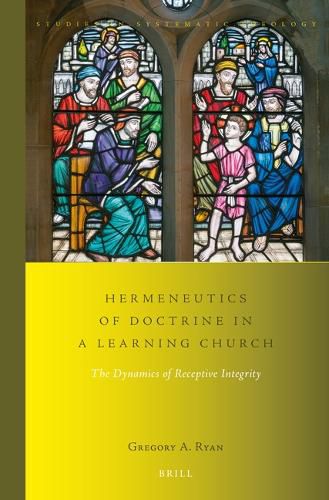Readings Newsletter
Become a Readings Member to make your shopping experience even easier.
Sign in or sign up for free!
You’re not far away from qualifying for FREE standard shipping within Australia
You’ve qualified for FREE standard shipping within Australia
The cart is loading…






In Hermeneutics of Doctrine in a Learning Church, Gregory A. Ryan offers an account of the dynamic, multi-dimensional task of interpreting Christian tradition. He integrates doctrinal hermeneutics, the ‘pastorality of doctrine’ exemplified by Pope Francis, and a systematic appraisal of Receptive Ecumenism to provide an original perspective on this task. The book focuses on three contemporary Catholic theologians (Francis Schussler Fiorenza, Ormond Rush, and Paul D. Murray), highlighting how each recognises the dynamic interaction of multiple perspectives involved in authentic ecclesial interpretation.
Christian tradition, whether passed on in teaching, scripture, practices, or structures, needs to be continually received and interpreted. This book offers theologians, ecumenists, and church workers a fresh model for receptive ecclesial learning in which doctrinal hermeneutics and pastoral realities are dynamically integrated.
$9.00 standard shipping within Australia
FREE standard shipping within Australia for orders over $100.00
Express & International shipping calculated at checkout
In Hermeneutics of Doctrine in a Learning Church, Gregory A. Ryan offers an account of the dynamic, multi-dimensional task of interpreting Christian tradition. He integrates doctrinal hermeneutics, the ‘pastorality of doctrine’ exemplified by Pope Francis, and a systematic appraisal of Receptive Ecumenism to provide an original perspective on this task. The book focuses on three contemporary Catholic theologians (Francis Schussler Fiorenza, Ormond Rush, and Paul D. Murray), highlighting how each recognises the dynamic interaction of multiple perspectives involved in authentic ecclesial interpretation.
Christian tradition, whether passed on in teaching, scripture, practices, or structures, needs to be continually received and interpreted. This book offers theologians, ecumenists, and church workers a fresh model for receptive ecclesial learning in which doctrinal hermeneutics and pastoral realities are dynamically integrated.